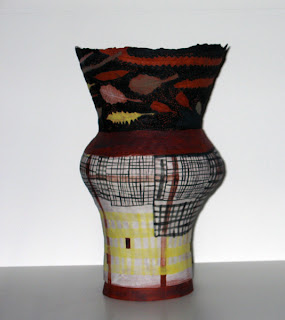When I started drawing the rock pools the drawings seemed to be
just about pattern and line and have no content. Without the narrative sustenance of an
intense personal history I saw pattern and colour beautiful and pristine but
unconnected to emotion. The rush of the
waves and overwhelming yellow/blue brightness of the shore pushed and pulled me
scouring my head and eyes. Limpets,
barnacles and periwinkles clinging to the rocks, closed, secrets hidden, even
when I prised them off. My eyes looked
and looked but just couldn’t see.
By contrast the bush is full of personal
history. Every step echoes and magnifies a million steps I have taken
before. Birds, creatures of legend and
metaphor, their swooping, gravity defying lightness and penetrating liquid
sounds are familiar and welcome. Here my
eyes looked and looked and saw what wasn’t there, there was too much narrative
getting tangled into the drawings.
Through being in these landscapes, taking photos, looking and drawing
again and again what was truly in front of me and not what was in my head the
meaning and emotional significance of the bush poured through the drawings into
the rock pools. By drawing I learned to
really see. By the end of the semester I
felt that the rock pool drawings on the pots had become an abstract rendering
of the experience of the rock pools, the bush drawings are still entangled in
my historical narrative. I’ve started
looking at shadows in the bush, and connections between twigs and branches,
details that I am not familiar with getting away from the recognizable
narrative of the bush and the birds, moving towards revealing the surprising,
overlooked yet intensely familiar beauty of the bush.

















































